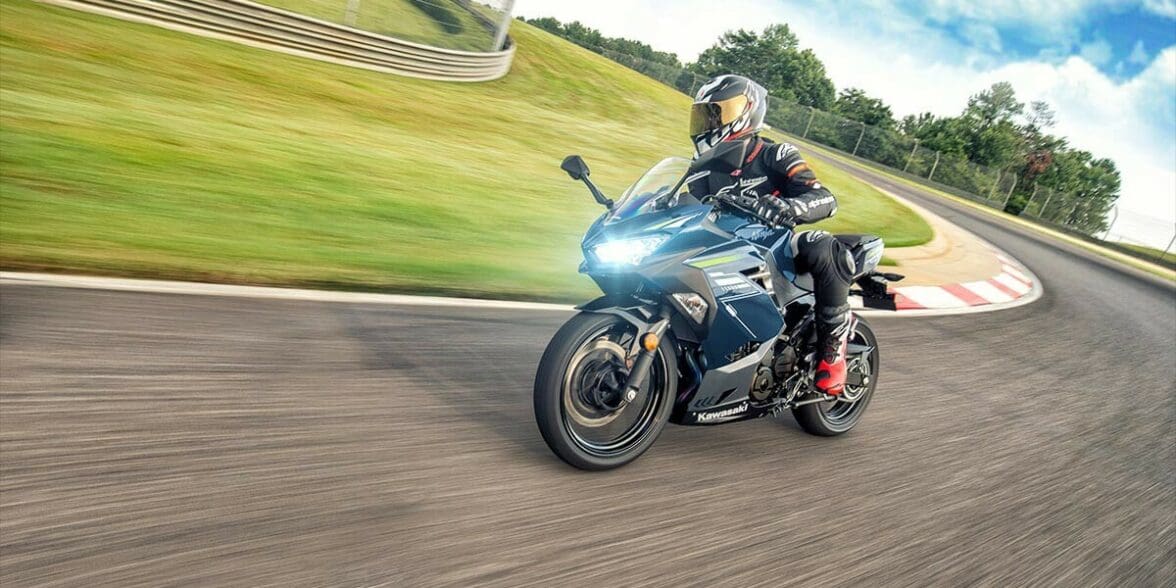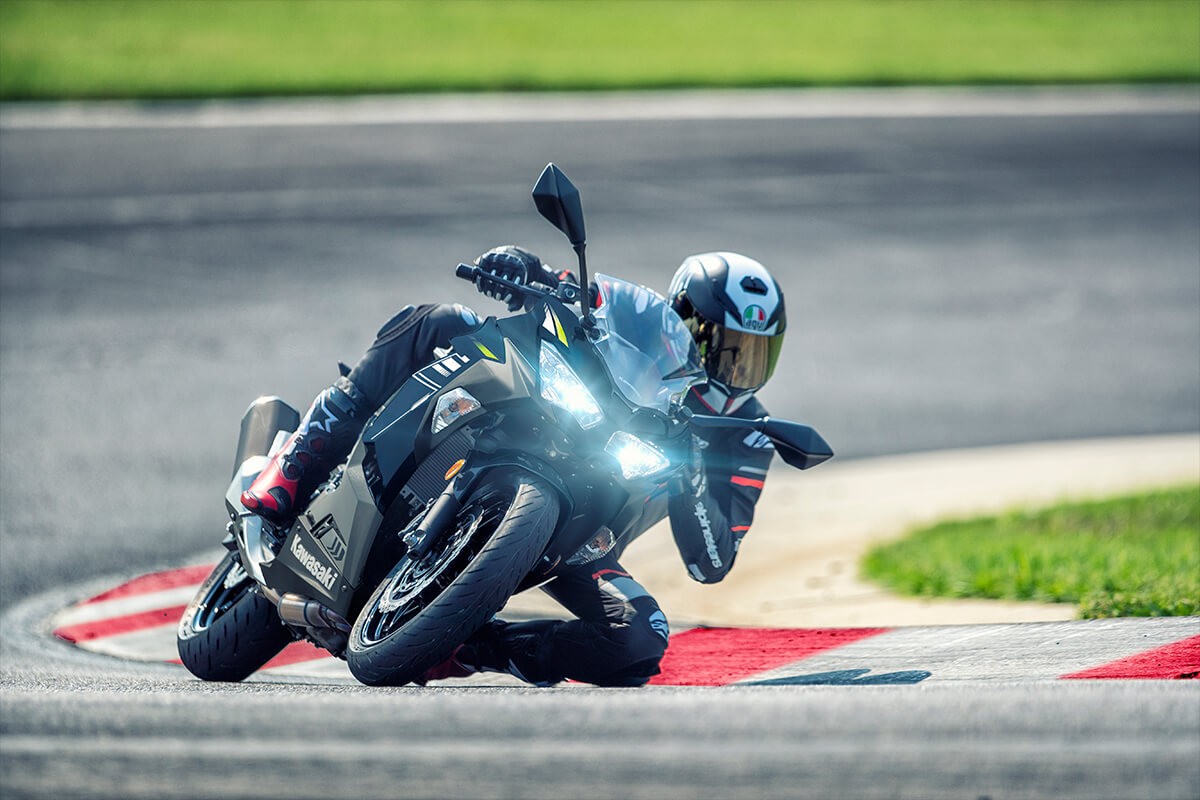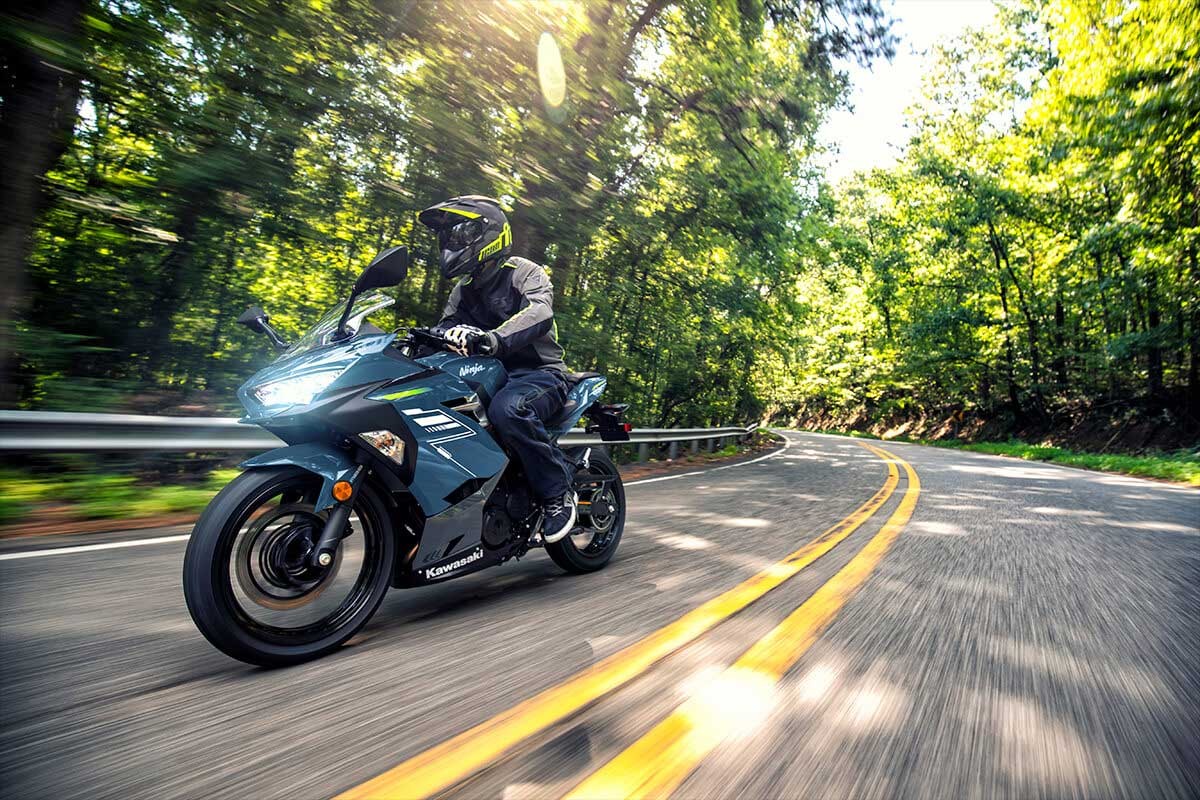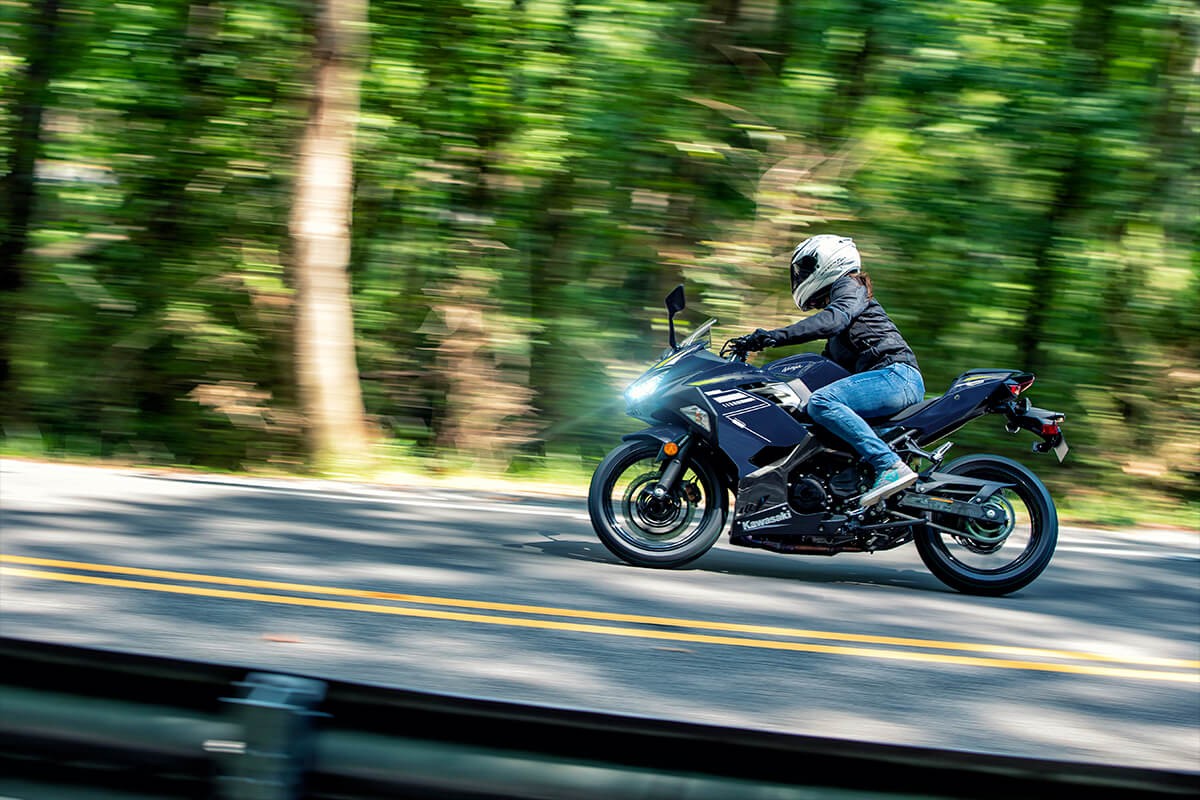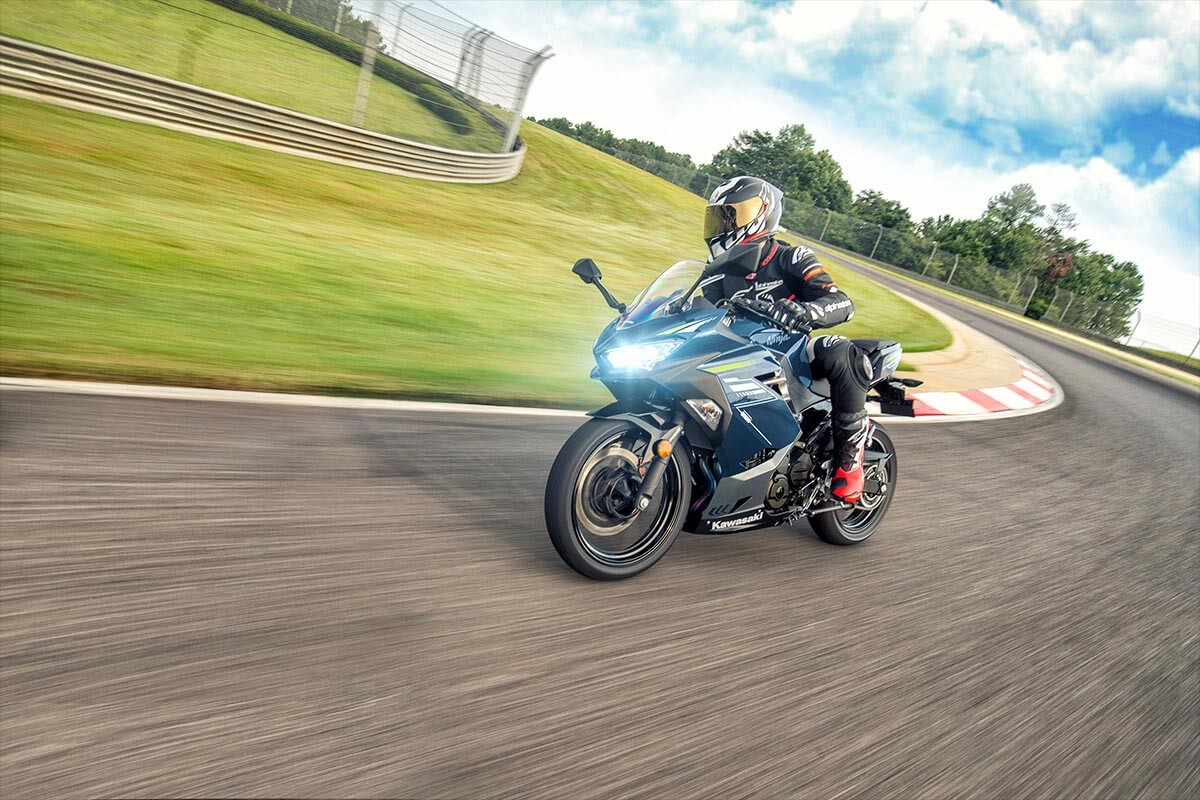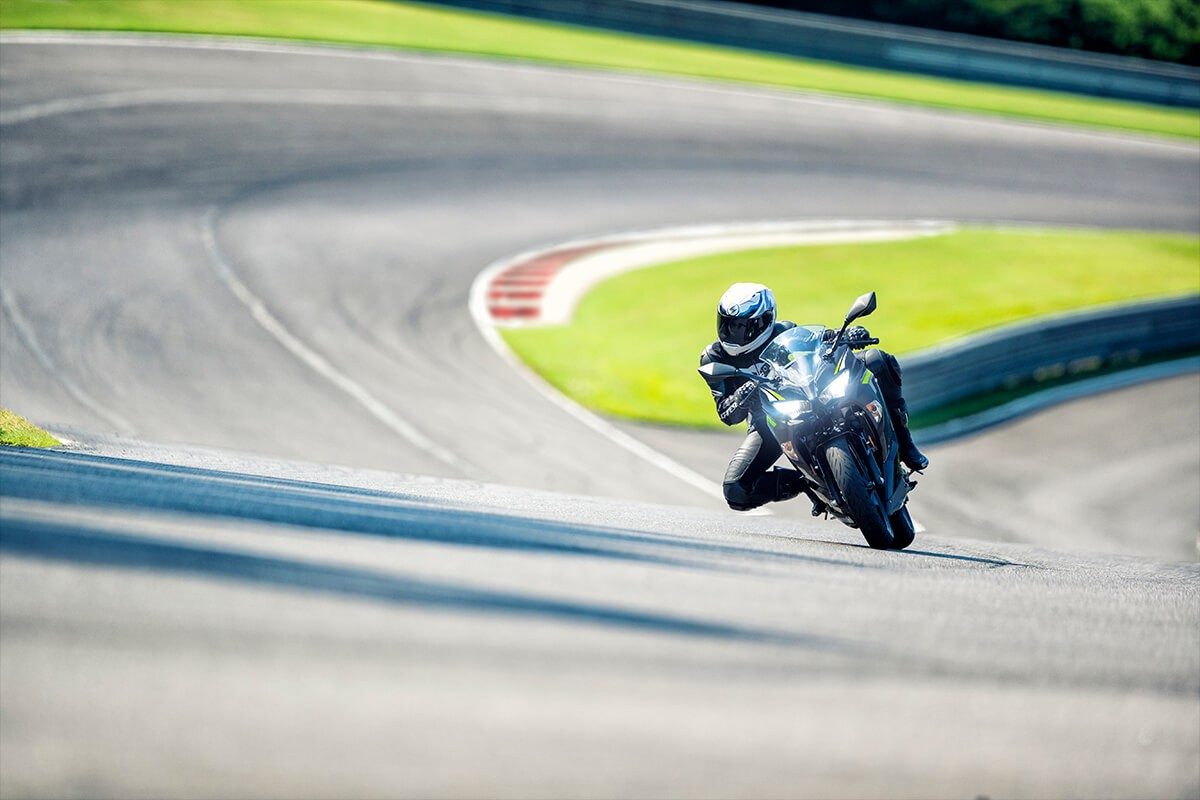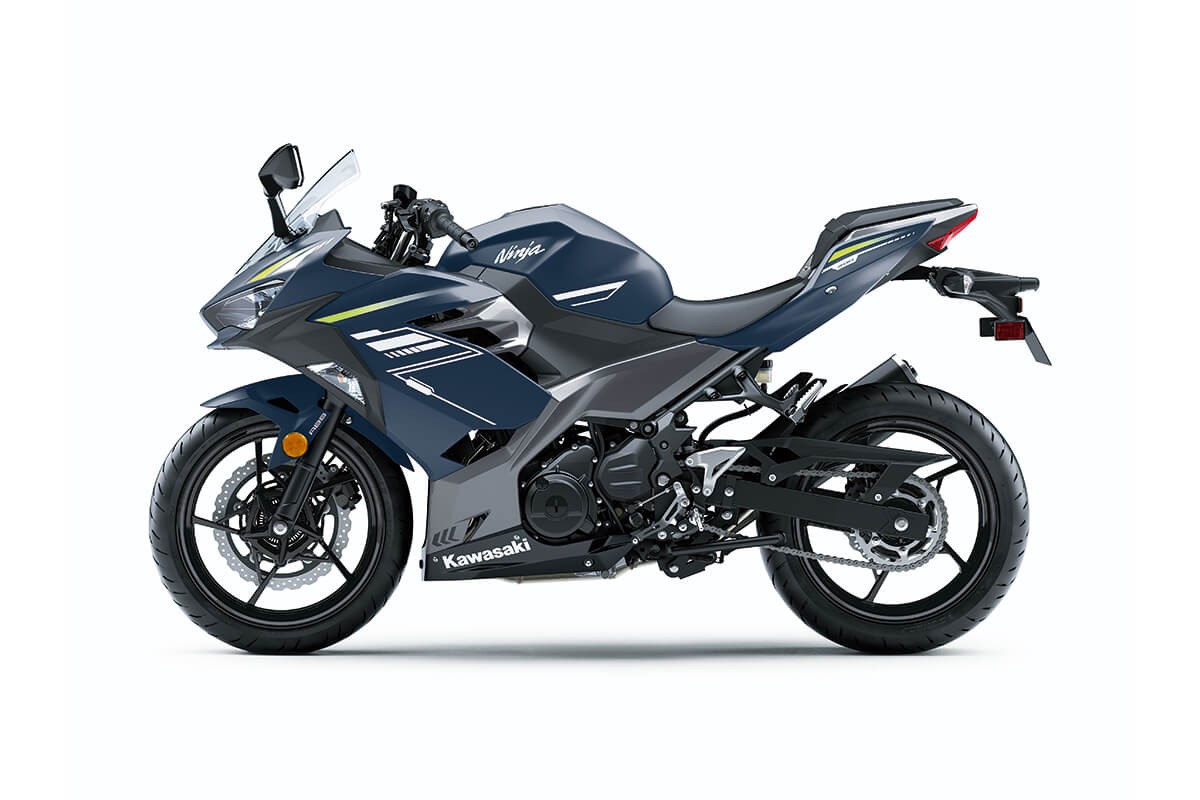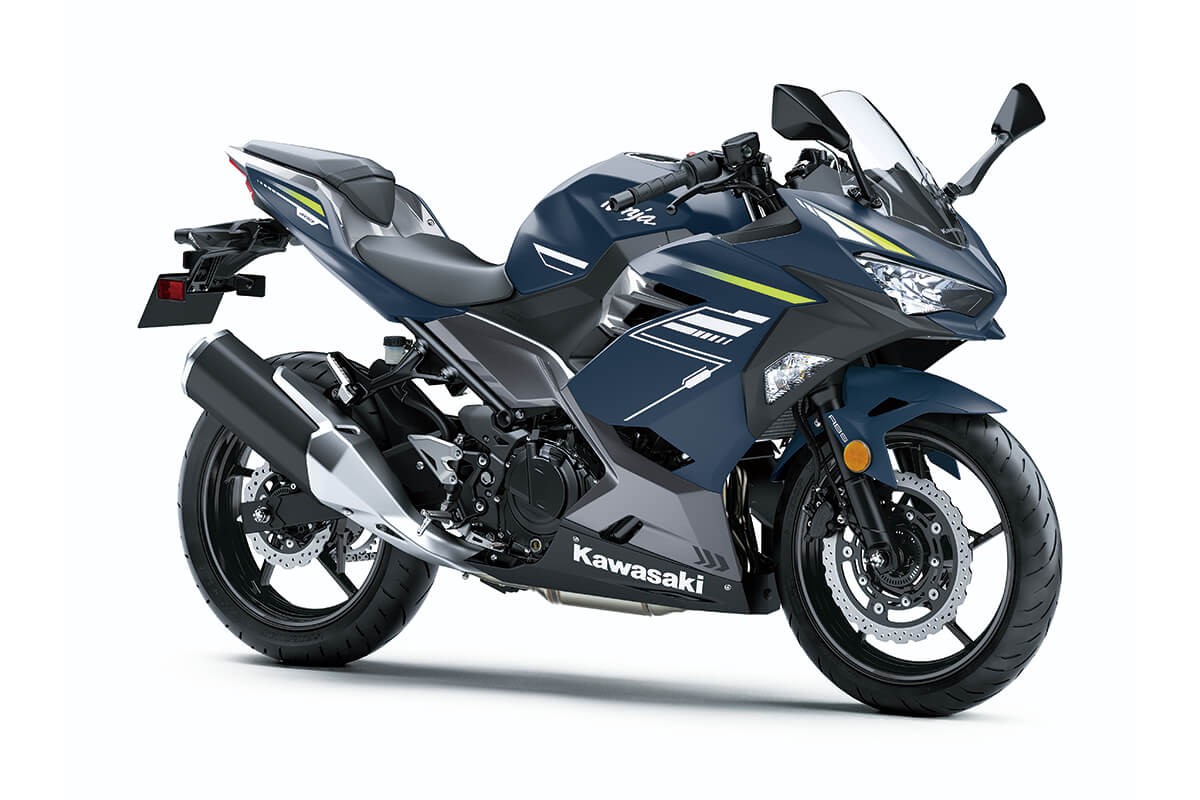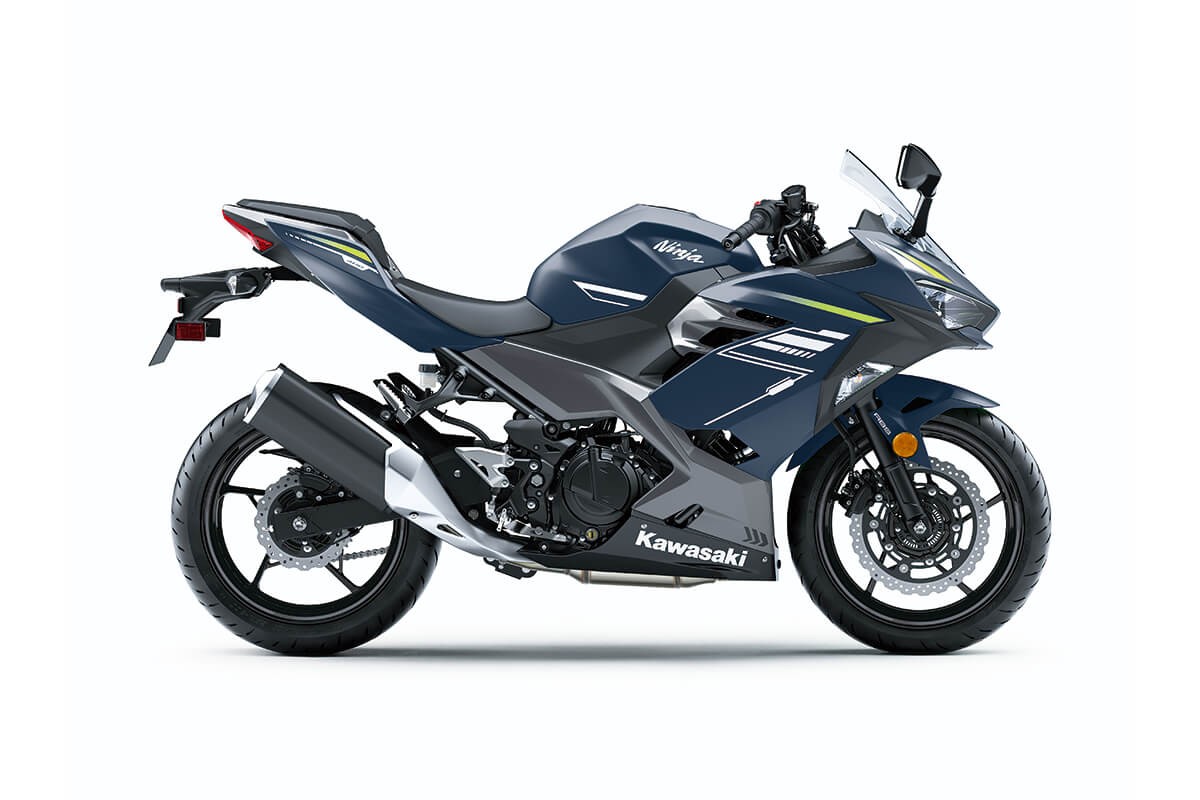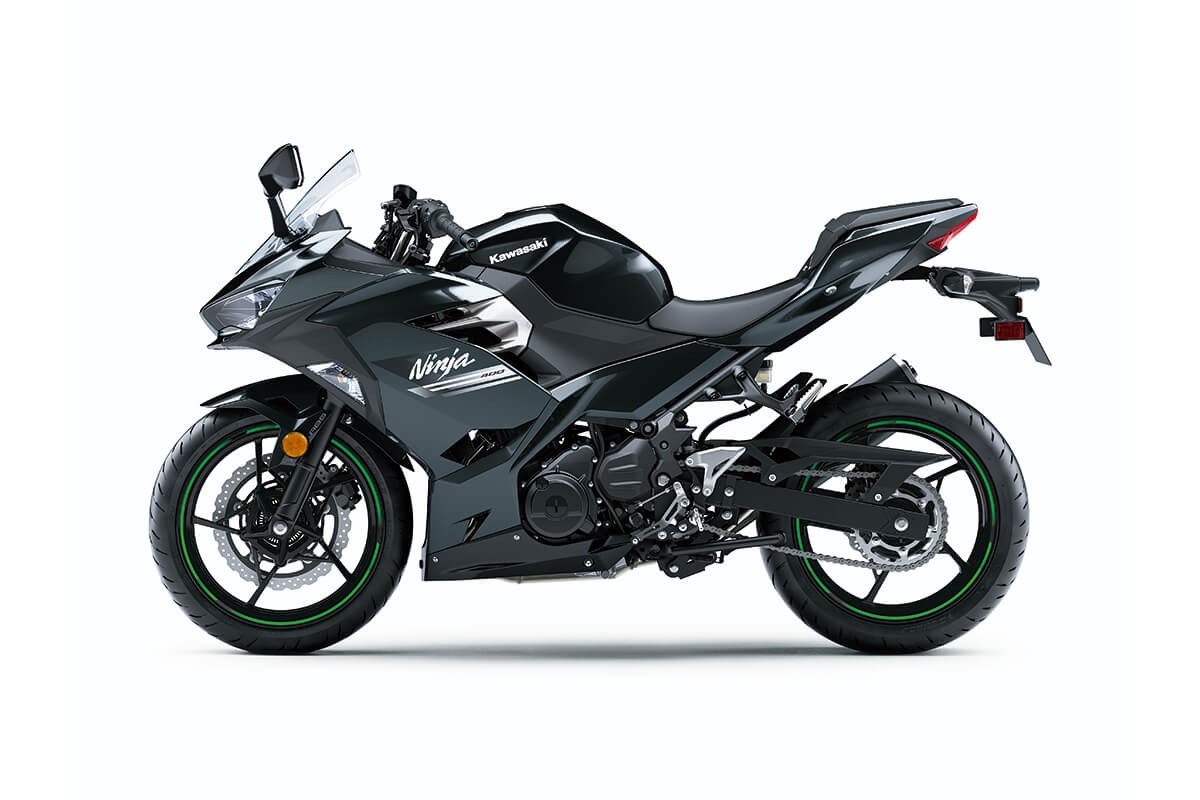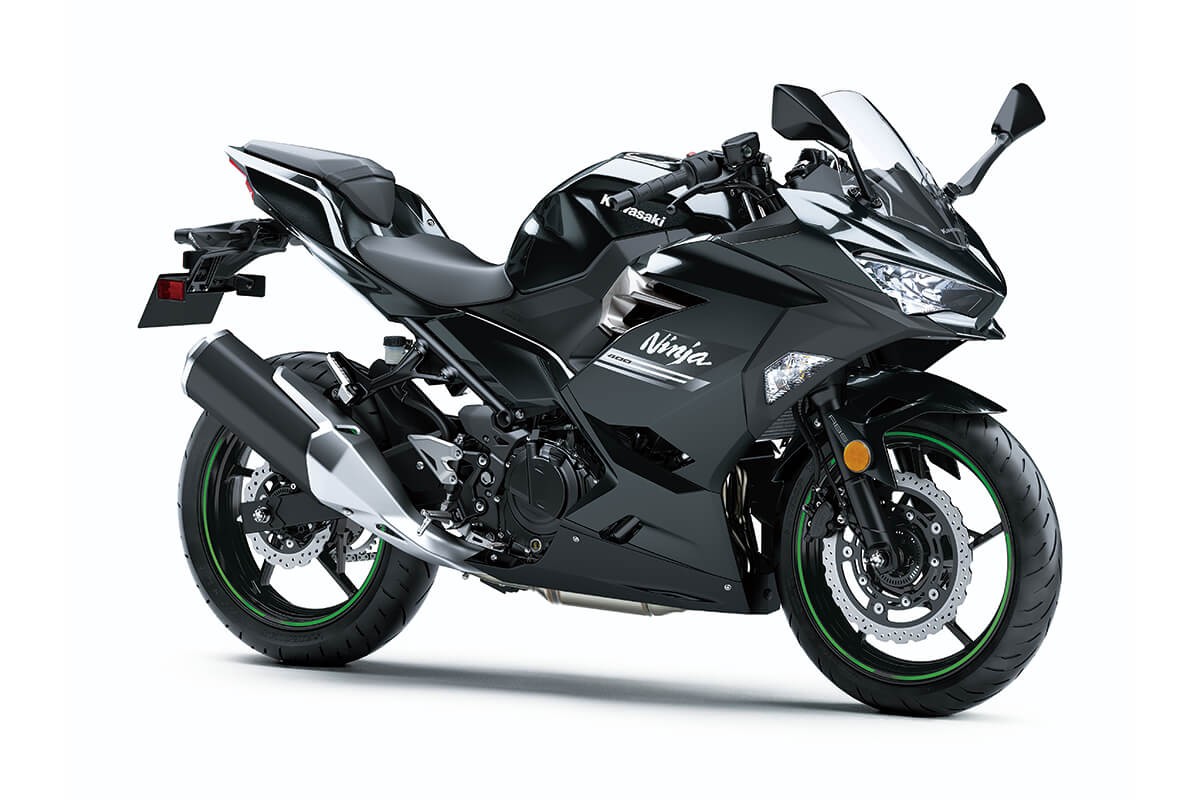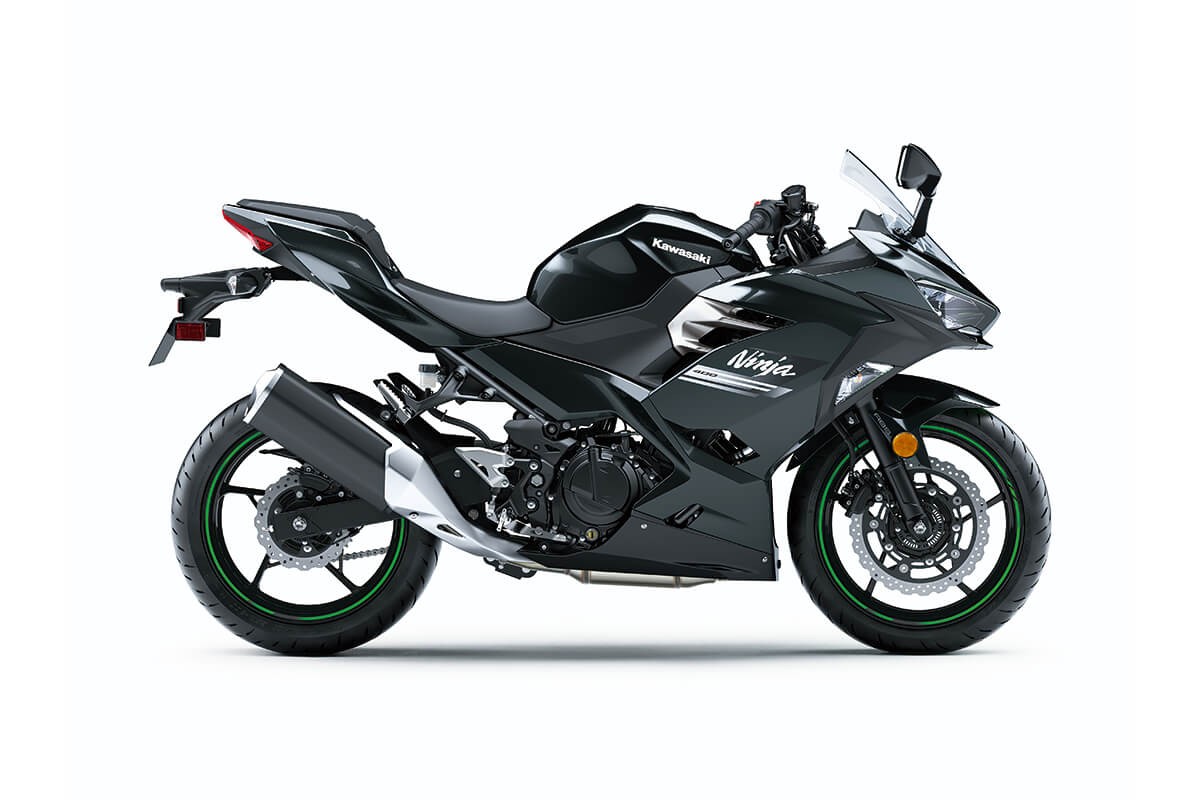The 2022 Kawasaki Ninja 400 ABS: Welcome to Your Ninja Training
Contents
The Kawasaki Ninja 400 ABS comes up pretty often in listicles of the best beginner sport bikes, and with good reason. While you certainly wouldn’t want to start your riding career on a Ninja H2 (unless you want it to be short and end painfully), this smaller and more approachable Ninja makes an excellent starter sport bike that can still propel you around the track at a decent clip.
Kawasaki loves to over-engineer their sport bikes, but they’ve focused on the fundamentals for the Ninja 400 ABS—like the compact 399cc parallel-twin engine that purrs away between your legs as you ride, providing 49 hp @ 10500 rpm and 28.0 lb-ft of torque @ 8000 rpm. The bike also has a lightweight trellis frame, which means you’ll never feel like you’ve got to lug it around corners or curves. There are no major upgrades from last year’s version for 2022, other than new colors.
An assist & slipper clutch, economical riding indicator, and Kawasaki’s ergo-fit technology all help make this a user-friendly bike for riders of many shapes, sizes, and experience levels. No, it’s not going to help Kawi pull ahead of the other big Japanese bike brands in terms of sheer performance—but it might help them capture a larger chunk of the growing market for new motorcyclists, and it will certainly hold its own against rivals like the Suzuki GSX 250R and the Yamaha YZF R3.
This year’s Ninja 400 ABS makes an admirable and approachable addition to the 2022 Kawasaki motorcycle lineup. It comes in Metallic Carbon Gray/Metallic Flat Spark Black and starts at $5,599 USD / $6,599 CAD.
On this page: we’ve curated specs, features, news, photos/videos, etc. so you can read up on the new 2022 Kawasaki Ninja 400 ABS in one place.
Model Overview
General Info
- Price: $5,599 USD / $6,599 CAD
- Key Features:
- Assist & slipper clutch
- Economical riding indicator
- Ergo-fit technology
- Lightweight trellis frame
Main Specs
- Engine: 399cc, liquid-cooled, 4-stroke, DOHC 8-valve parallel twin
- Power: 49 hp @ 10500 rpm
- Torque: 28.0 lb-ft of torque @ 8000 rpm
- Dry Weight: 366 lbs (166kg)
- Seat Height: 30.9 inches (785 mm)
Competitors
2022 Kawasaki Ninja 400 ABS Specifications
ENGINE |
||
| Engine | 399cc, 4-stroke, Parallel Twin, DOHC, liquid-cooled | |
| Power | 49 Hp | |
| Bore x Stroke | 70.0 x 51.8mm | |
| Compression Ratio |
11.5:1
|
|
| Fuel System | DFI® with dual 32mm throttle bodies | |
| Starter | Electric | |
| Electronic Rider Aids | ABS | |
DRIVETRAIN |
||
| Clutch | ||
| Transmission | 6-speed, Manual, Return Shift, Dog Ring | |
| Final Drive | Sealed chain | |
CHASSIS |
||
| Suspension Front | 41mm hydraulic telescopic fork/4.7 in | |
| Suspension Rear | Horizontal back-link with adjustable spring preload/5.1 in | |
| Brakes Front | Single 310mm semi-floating petal-type disc with 2-piston calipers and ABS | |
| Brakes Rear |
Single 220mm petal-type disc with single-piston caliper and ABS
|
|
| Tires Front | 110/70-17 | |
| Tires Rear | 150/70-17 | |
| Fuel Tank Capacity | 3.7 gal | |
| Color |
Metallic Matte Twilight Blue/Metallic Graphite Gray, Metallic Carbon Gray/Metallic Flat Spark Black
|
|
ELECTRICAL |
||
| Ignition | TCBI w/Digital Advance | |
| Spark Plugs | ||
| Headlight | LED | |
| Tail Light | LED | |
DIMENSIONS |
||
| Overall Length | 78.3 in | |
| Overall Width | 28 in | |
| Overall Height | 44.1 in | |
| Wheelbase | 53.9 in | |
| Ground Clearance | 5.5 in | |
| Seat Height | 30.9 in | |
| Curb Weight | 366* | |
WARRANTY |
||
| Warranty | 12 Months | |
| Kawasaki Protection Plus | 12, 24, or 36 months | |
2022 Kawasaki Ninja 400 ABS Features
Assist & Slipper Clutch
Under normal operation, the assist cam functions as a self-servo mechanism, pulling the clutch hub and operating plate together to compress the clutch plates. This allows the total clutch spring load to be reduced, resulting in a lighter clutch lever feel when operating the clutch.
When excessive engine braking occurs – as a result of quick downshifts (or an accidental downshift) – the slipper cam comes into play, forcing the clutch hub and operating plate apart. This relieves pressure on the clutch plates to reduce back-torque and helps prevent the rear tire from hopping and skidding. This race-style function is particularly useful when sport or track riding.
Economical Riding Indicator
While effective vehicle speed and engine speed may vary by model, paying attention to conditions that cause the “ECO” mark to appear can help riders improve their fuel efficiency – a handy way to increase cruising range. Further, keeping fuel consumption low also helps minimize negative impact on the environment.
ABS (Anti-lock Brake System)
ERGO-FIT
ERGO-FIT® is an interface system designed to allow riders to find their ideal riding position. Various points of the chassis interface (the handlebar, footpegs and seat, etc.) can be adjusted through a combination of interchangeable parts and parts with adjustable positions. This enables a wide range of riders to find a riding position that offers both comfort and control. Feeling at one with their machine, they will be able to experience how Kawasaki machines are fun and rewarding to ride.
2022 Kawasaki Ninja 400 ABS Photos
2022 Kawasaki Ninja 400 ABS Videos
2022 KAWASAKI NINJA 400 | WHAT’S NEW?
2022 Kawasaki Ninja 400 First Ride | REVIEW
Links
Kawasaki Official Websites


